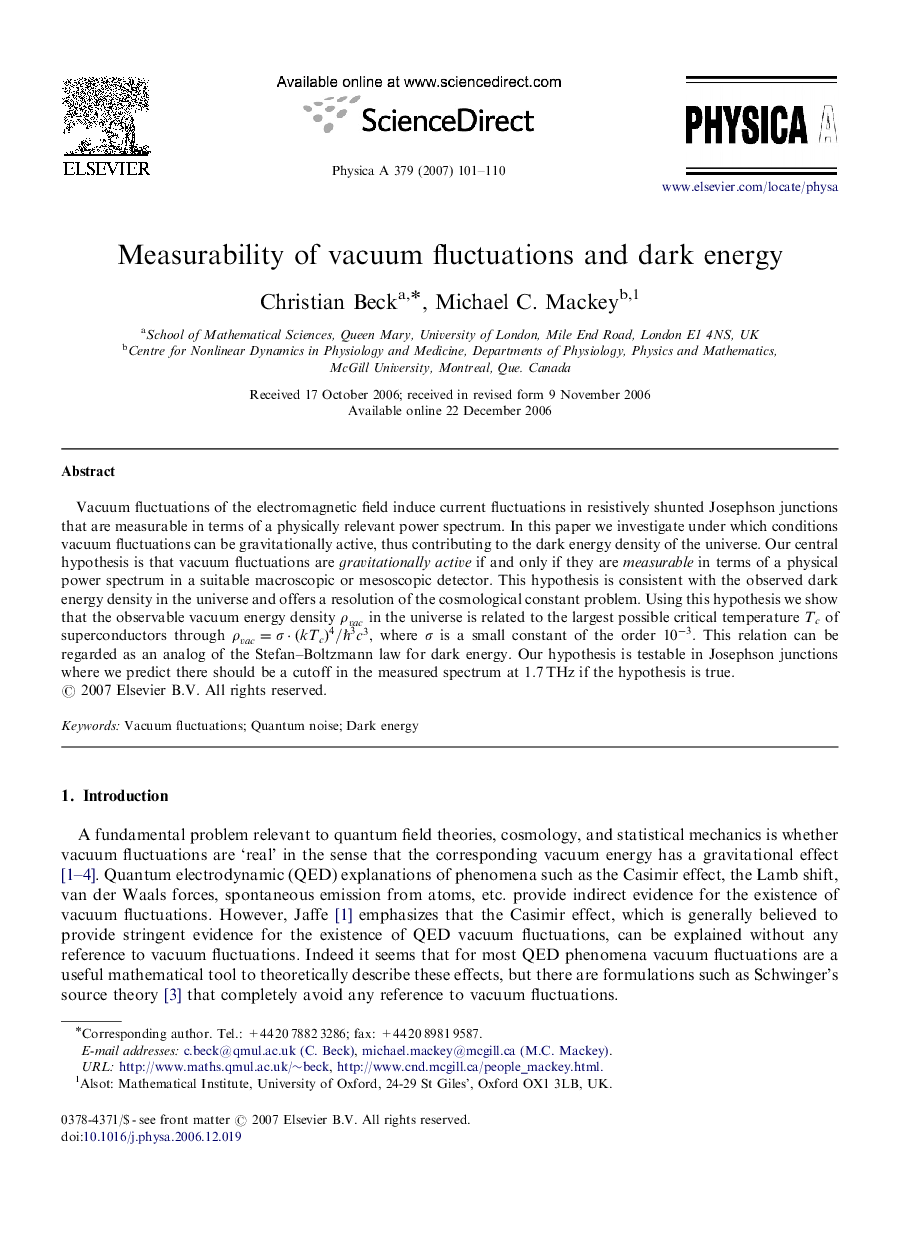| Article ID | Journal | Published Year | Pages | File Type |
|---|---|---|---|---|
| 979088 | Physica A: Statistical Mechanics and its Applications | 2007 | 10 Pages |
Vacuum fluctuations of the electromagnetic field induce current fluctuations in resistively shunted Josephson junctions that are measurable in terms of a physically relevant power spectrum. In this paper we investigate under which conditions vacuum fluctuations can be gravitationally active, thus contributing to the dark energy density of the universe. Our central hypothesis is that vacuum fluctuations are gravitationally active if and only if they are measurable in terms of a physical power spectrum in a suitable macroscopic or mesoscopic detector. This hypothesis is consistent with the observed dark energy density in the universe and offers a resolution of the cosmological constant problem. Using this hypothesis we show that the observable vacuum energy density ρvacρvac in the universe is related to the largest possible critical temperature TcTc of superconductors through ρvac=σ·(kTc)4/ℏ3c3ρvac=σ·(kTc)4/ℏ3c3, where σσ is a small constant of the order 10-310-3. This relation can be regarded as an analog of the Stefan–Boltzmann law for dark energy. Our hypothesis is testable in Josephson junctions where we predict there should be a cutoff in the measured spectrum at 1.7 THz if the hypothesis is true.
